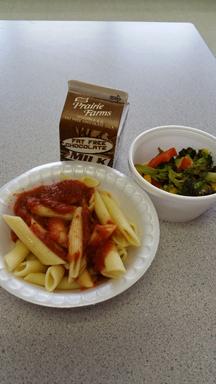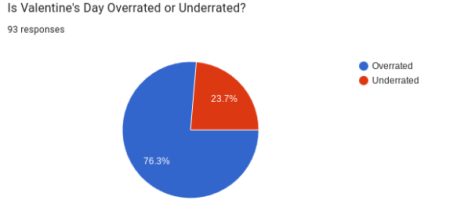MHS Lunchroom Needs A Diet

A normal meal served at MHS.
April 4, 2016
School lunches: televisions make them seem like they are some of the most dreaded meals of the day. The mean, gross lunch lady slaps something on a tray that leaves the child wondering what he is about to eat.
But at MHS, the cafeteria scene is far from that image. Here, everyone wants a piece of the meal.
This, however, isn’t necessarily a good thing, considering many items on the menu are fried or not fresh fruits and vegetables.
During the 2015-16 school year, the cafeteria offerings strayed from the Michelle Obama’s anti-“anything but vegetables” food guidelines. While the intentions were good, to help students create a healthier lifestyle, the reactions were not; many students nationwide were not fond of the new food offerings. The same was true in Mundelein, so MHS opted out of the program.
Now, students line up to get some of their favorite foods from Paninis to double cheeseburgers.
Such foods have become a hit!

Nomika Harris, sophomore, enjoys her panini at lunch.
But while the food is great, I would rather have the school watch out for the health of their students.
This wouldn’t be an issue if the occasional cheeseburger was a treat for teens, but when they are consuming the greasy 500+ calories five days out of the week, the habit can create concern for the children’s health.
And it’s not just the burgers.
“The fries are very salty,” said Michael Pini, sophomore, “and they give you a lot of them …. But it’s bad because they [taste] really good.”
It’s not as though these great-tasting options are forced on the students. There are many healthier alternatives. There is wheat bread for your sandwiches, salads or chicken wraps.
It just takes a very mature high school student to make the healthier choice.
A recent YouTube video I saw shows that age plays a large part in choosing better foods for us.
In the video, grown adults are given the opportunity to eat their childhood lunches. They come to find, though, that they are surprised at how bad the food is, despite memories of enjoying this kind of food every day in childhood.
“I see with my own friends that students don’t make the healthier [choices],” Pini said.
It unsettles me when I sit in the lunchroom and see children eating the greasy food. Instead, I want to help them and guide them toward the better alternative.
It’s different when athletic students choose a Panini or pasta one or two days a week because their lifestyle allows them to do that, but each student would have to have a mature understanding of calorie-intake versus calories burned. To have this type of understanding, though, takes thought.
But the food services program could put more thought into their healthier options, too, as some students have noted.
“I think they should put more time and effort into their healthier options; their salads have soggy croutons,” said Jennifer Schaedel, sophomore.
Small things like this can ruin the opportunity for children to lean toward the healthy food. After Schaedel noticed the soggy croutons happening on a regular basis, she switched to the Paninis because she knew they would come out perfectly every time.
The health of students should be everyone’s concern, and food standards should be held to the ideal of keeping all students healthy.
